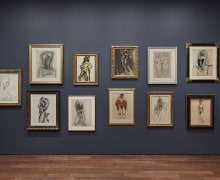
1881-1973
Pablo Picasso is perhaps the most important artist of the 20th century, a judgement based on his prolific output and genius in artistic innovations.
Born in 1881 in Spain, the son of an art teacher, Picasso exhibited his first paintings in Barcelona at the age of 12. After an earlier trip to Paris, he left Barcelona in 1904 and moved permanently to Paris. Although he never lived in Spain again, his earliest experiences, his family and his culture remained a creative force in his art until his death in 1973.
EARLY WORKS
The paintings from the so-called 'Blue Period' (1903-1904) were Picasso's first to receive serious attention in the French press. Painted in cool blue and gray tones, the works reflect a somber and distressed view of life as he experienced it as a poor artist. The Blue Period is followed by the Rose Period (1905-1906), when the color lightens and Picasso paints images of circus figures such as the jester, the acrobat, and the harlequin.
THE RISE OF CUBISM
By 1906, Picasso teamed up with Georges Braque, embarking on a more conceptual and theoretical pursuit that marks the beginnings of Cubism. Cubist paintings, drawings and sculpture focus less on a romantic notion of expression than on an investigation of the structure of a painting or its formal properties. Cubism was by far the most important art movement in modern times, a revolution, for the work produced by Picasso, Braque and Juan Gris from 1909 until 1914 literally changed how and why art is made, then and now.
WAR, MARRIAGE AND RELATIONSHIPS
The War Years from 1914-1917 were tumultuous, and while Picasso stayed in Paris, many of his friends and fellow artists such as Braque, Leger and Apollinaire, went to war. With his marriage in 1918 to the Russian dancer Olga Koklova, Picasso's work changed once again as he became more involved with theatrical productions and the ballet.
For the rest of his life, Picasso used the structure of Cubist painting to enhance the personal and autobiographical images that link his art and his life. His relationships and partnerships with both men and women informed his art, so that every change in relationship precipitated a stylistic change. From the 1930's until his death in 1973, the successive periods in his art are identified by the names of his love interests: Marie-Therese, Dora Maar, Francoise Gilot, and his second wife Jacqueline.
LATE WORKS
The late work shows as much vitality as the early works, and the production of paintings, drawings, prints, sculpture and ceramics well into his 90's is a testimonial to a life dedicated to art. Picasso had an emotional reaction to people and events that allowed him to move from style to style as if he were reinventing himself at each stage like an actor in a theatrical role. But there was always the tragic, the comic, and the sexual from style to style, a consistency of vision that sustained him throughout his career.


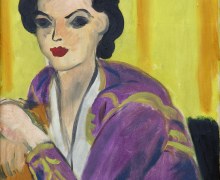

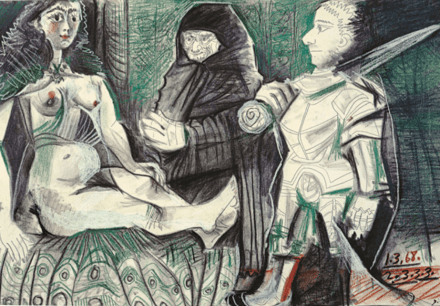
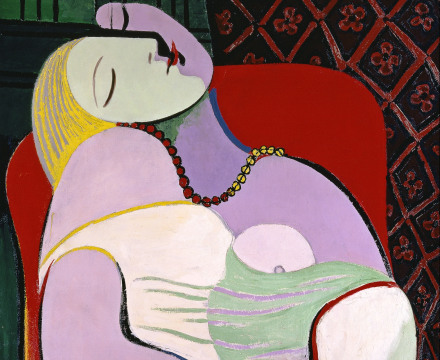

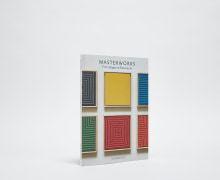
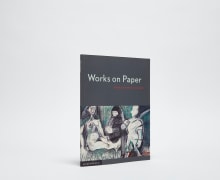
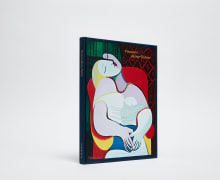

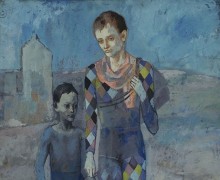
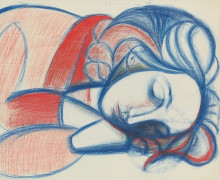

![Pablo Picasso,Les demoiselles d’Avignon: Nu jaune (Étude) [Lesdemoiselles d’Avignon: Yellow Nude (Study)] Paris, (June-July 1907)](https://img.artlogic.net/w_220,h_180,c_lfill/exhibit-e/559650f9cfaf34ff158b4568/a4fb767ca2a217d4cc9d9252de3a4af1.jpeg)